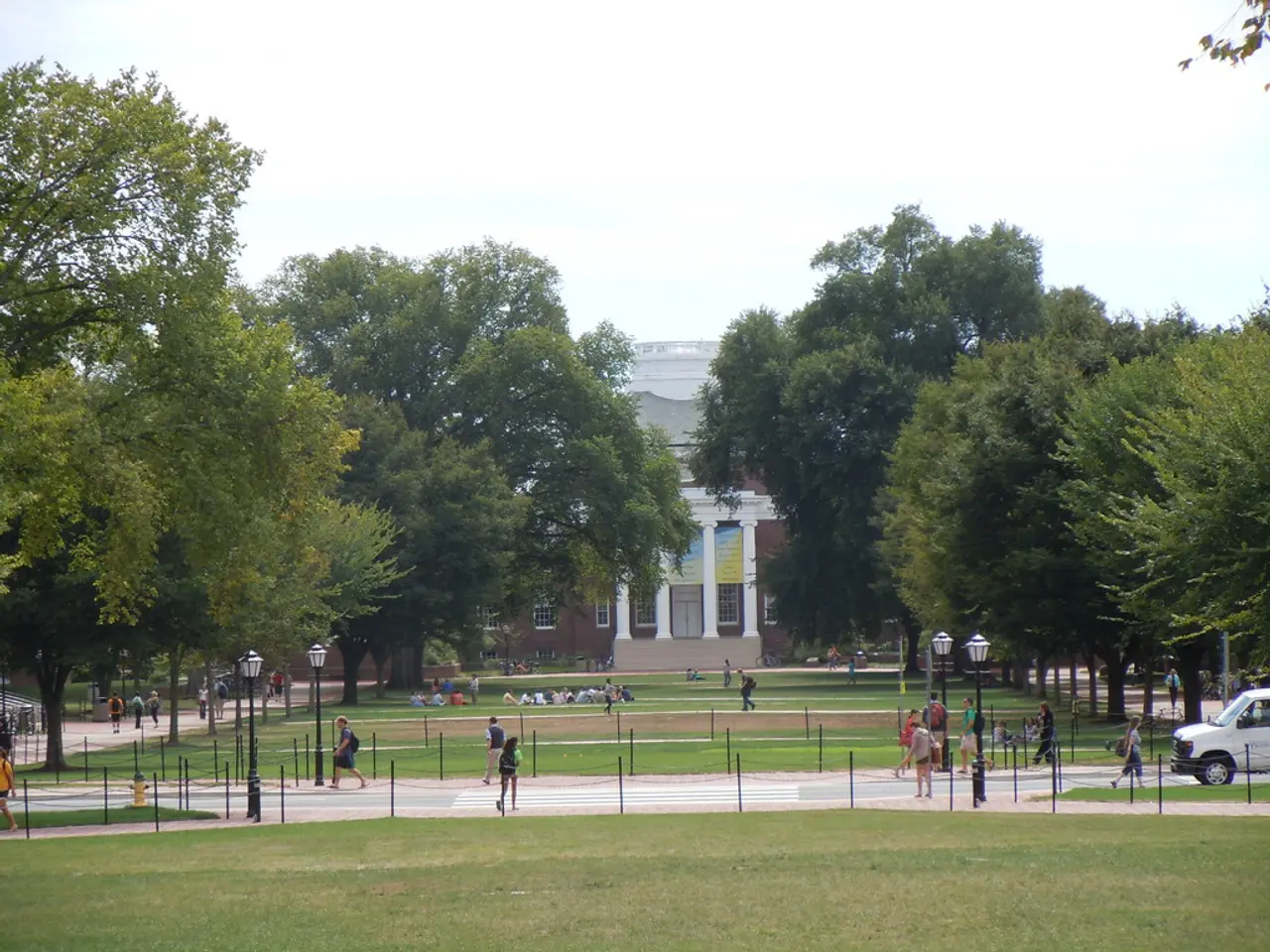Exploring the Option of Pursuing MBBS in Nepal: Criteria for Admission, Available Seats, and International Recognition
For international students, particularly those from India, Nepal emerges as a viable and recognized destination to study MBBS. Here's a detailed guide on the process, requirements, and key aspects of studying MBBS in Nepal.
Academic Qualifications
To be eligible, students must have completed their 10+2 or equivalent with Physics, Chemistry, Biology (PCB), and English as core subjects. A minimum aggregate of 50-60% in PCB is generally required, though percentages may vary slightly by university or category. Indian students must also qualify the NEET exam as per Medical Council of India/National Medical Commission guidelines [1][3][4].
Age Criteria
Applicants must be at least 17 years old by December 31 of the admission year [1][3].
Entrance Examinations
International students often need to clear the MECEE (Medical Education Common Entrance Examination) conducted by Nepal's Medical Education Commission (MEC), especially for merit-based seat allocation. MECEE is a 200 MCQ exam covering Zoology, Botany, Chemistry, Physics, and Mental Agility. Indian students specifically must clear the NEET exam for admission to Nepal medical colleges. Some colleges may also conduct their own entrance exams or allow admissions based on NEET scores and academic merit [1][5].
Application Process
- Research and shortlist universities.
- Fill out the university application form accurately.
- Upload necessary documents.
- Receive an admission/offer letter.
- Pay the tuition fees as per university guidelines.
- Apply for a student visa with the admission letter, passport, and proof of funds.
- Arrange travel and complete university registration upon arrival [2].
Documents Required
- 10th certificate and mark sheet.
- 12th certificate and mark sheet.
- Valid birth certificate.
- Valid passport.
- NEET scorecard (for Indian students).
- Passport size photos.
- Transfer and character certificates may also be required [1][3].
Course Duration & Structure
The MBBS program in Nepal typically lasts 5 years and 6 months, including 1 year of internship. Instruction is primarily in English. The syllabus closely follows Indian medical curriculum standards, ensuring recognition by bodies like NMC, WHO, and UNESCO [3][4].
Fees and Living Cost
Tuition fees range approximately from 50 to 60 lakh INR for the entire course. Monthly living expenses in Nepal are relatively low (around 100 USD/month) [4].
Recognition and Licensing
Medical degrees from Nepalese universities are recognized by the Nepal Medical Council (NMC), WHO, and the Indian Medical Council/NMC. International students must clear the Foreign Medical Graduate Examination (FMGE) or NEXT exam after MBBS for practicing medicine in India. Other countries have their respective licensing exams (e.g., USMLE for USA) [2][4].
It is crucial to follow a step-by-step vetting routine using official links only, and to confirm the school's accreditor status on WFME Recognition Programme list/map. Scholarship demand often exceeds available seats, and families can find fee frameworks, deposits, and payment schedules on the official pages and the MEC portal.
Students in Nepal work with diverse communities, respecting patient confidentiality, informed consent, and culturally sensitive communication as part of daily practice. Nepal has a single entrance route for MBBS and public posting of seat categories, providing clarity for families on rules and numbers. The physician density in Nepal is lower than many regions, making medical education a focus of policy attention.
[1] Medical Education Commission of Nepal [2] Embassy of Nepal in India [3] Ministry of Education, Science and Technology, Nepal [4] Nepal Medical Council [5] MECEE-BL
- The academic qualifications for studying MBBS in Nepal require students to complete their 10+2 or equivalent, with physics, chemistry, biology, and English as core subjects, and a minimum aggregate of 50-60% in PCB.
- Indian students must also qualify the NEET exam as per Medical Council of India/National Medical Commission guidelines.
- Applicants must be at least 17 years old by December 31 of the admission year for studying MBBS in Nepal.
- International students often need to clear the MECEE conducted by Nepal's Medical Education Commission for merit-based seat allocation, while Indian students must clear the NEET exam for admission to Nepal medical colleges.
- To apply to universities, students should research and shortlist universities, fill out the university application form accurately, upload necessary documents, receive an admission/offer letter, pay the tuition fees as per university guidelines, apply for a student visa, arrange travel, and complete university registration upon arrival.
- Required documents for admission include the 10th certificate and mark sheet, 12th certificate and mark sheet, valid birth certificate, valid passport, NEET scorecard (for Indian students), passport size photos, and transfer and character certificates.
- The MBBS program in Nepal lasts 5 years and 6 months, with instruction primarily in English and a syllabus following Indian medical curriculum standards for recognition by bodies like NMC, WHO, and UNESCO.
- Tuition fees for the entire course range approximately from 50 to 60 lakh INR, while monthly living expenses in Nepal are relatively low, around 100 USD/month.
- Medical degrees from Nepalese universities are recognized by the Nepal Medical Council, WHO, and the Indian Medical Council/NMC. However, international students must clear the Foreign Medical Graduate Examination (FMGE) or NEXT exam after MBBS for practicing medicine in India.
- Considering the high demand for scholarships and the varying fee structures, it is essential to follow a vetting routine, confirm the school's accreditor status on WFME Recognition Programme list/map, and seek information on fee frameworks, deposits, and payment schedules from the official pages and the MEC portal for education-and-self-development and future career opportunities.




